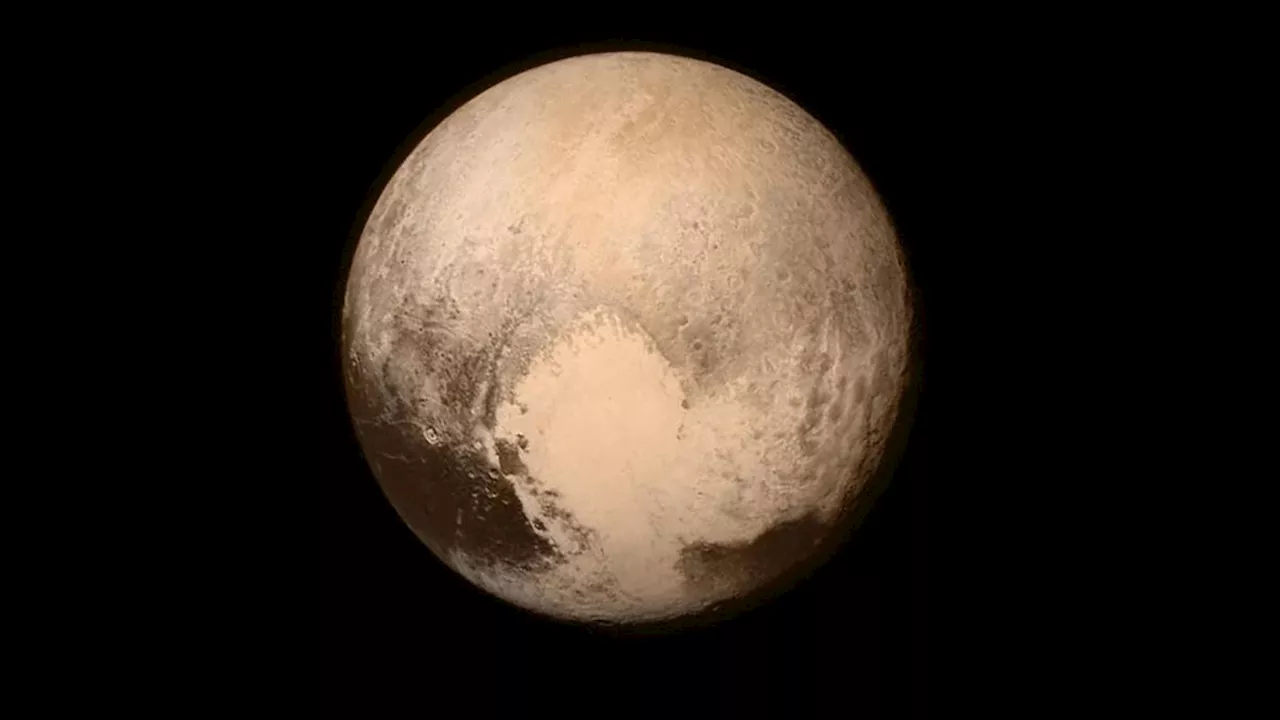Stephanie Pappas is a contributing writer for Live Science, covering topics ranging from geoscience to archaeology to the human brain and behavior.
When NASA's New Horizons spacecraft flew by Pluto in 2015, it returned images with a sweet surprise: a heart-shaped formation dominating the surface of the dwarf planet.
"We are used to thinking of planetary collisions as incredibly intense events where you can ignore the details except for things like energy, momentum and density," Asphaug said in a statement. But in the distant solar system, velocities are so much slower, and solid ice is strong, so you have to be much more precise in your calculations. That's where the fun starts.
By submitting your information you agree to the Terms & Conditions and Privacy Policy and are aged 16 or over.The icy rock that hit Pluto was probably around 454 miles in diameter, the study authors said. Because of Pluto's icy core, the impact did not melt and liquefy portions of the planet as might happen in an impact in warmer climes, allowing the impacting body to sink into the planet's core.
The simulations further suggest that Pluto does not hold a subsurface ocean under its icy outer layers, the researchers reported. Because Pluto's heart has a lower mass than the rest of the dwarf planet's surface, it should have gradually migrated toward the pole as Pluto rotated over millennia. But the formation is near the planet's equator — an odd position researchers had previously theorized might be due to the dynamics of a huge body of subsurface liquid water.
United States Latest News, United States Headlines
Similar News:You can also read news stories similar to this one that we have collected from other news sources.
 Pluto TV Hosting Rally to Turn Pluto Back Into a PlanetPluto was 'demoted' from planet status in 2006.
Pluto TV Hosting Rally to Turn Pluto Back Into a PlanetPluto was 'demoted' from planet status in 2006.
Read more »
 New trial hints at a possible HIV cure approach: Wake up latent virus hiding in the body, then kill itStephanie Pappas is a contributing writer for Live Science, covering topics ranging from geoscience to archaeology to the human brain and behavior.
New trial hints at a possible HIV cure approach: Wake up latent virus hiding in the body, then kill itStephanie Pappas is a contributing writer for Live Science, covering topics ranging from geoscience to archaeology to the human brain and behavior.
Read more »
 2,000 earthquakes in 1 day off Canada coast suggest the ocean floor is ripping apart, scientists sayStephanie Pappas is a contributing writer for Live Science, covering topics ranging from geoscience to archaeology to the human brain and behavior.
2,000 earthquakes in 1 day off Canada coast suggest the ocean floor is ripping apart, scientists sayStephanie Pappas is a contributing writer for Live Science, covering topics ranging from geoscience to archaeology to the human brain and behavior.
Read more »
 Elusive form of carbon tougher than diamonds created in supercomputer simulation for 1st time everStephanie Pappas is a contributing writer for Live Science, covering topics ranging from geoscience to archaeology to the human brain and behavior.
Elusive form of carbon tougher than diamonds created in supercomputer simulation for 1st time everStephanie Pappas is a contributing writer for Live Science, covering topics ranging from geoscience to archaeology to the human brain and behavior.
Read more »
 Ice-cold plunges and breath-holding: Does the 'Wim Hof method' do anything?Stephanie Pappas is a contributing writer for Live Science, covering topics ranging from geoscience to archaeology to the human brain and behavior.
Ice-cold plunges and breath-holding: Does the 'Wim Hof method' do anything?Stephanie Pappas is a contributing writer for Live Science, covering topics ranging from geoscience to archaeology to the human brain and behavior.
Read more »
 Mass die-off half a billion years ago caused by shifting tectonic plates, ancient rocks revealStephanie Pappas is a contributing writer for Live Science, covering topics ranging from geoscience to archaeology to the human brain and behavior.
Mass die-off half a billion years ago caused by shifting tectonic plates, ancient rocks revealStephanie Pappas is a contributing writer for Live Science, covering topics ranging from geoscience to archaeology to the human brain and behavior.
Read more »
